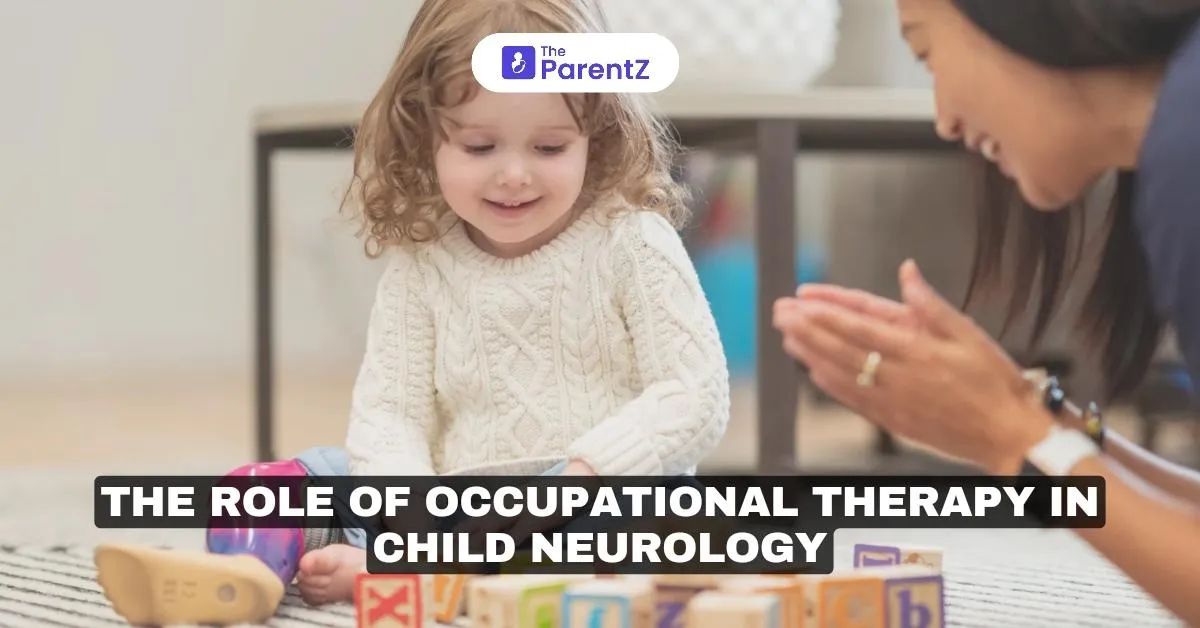Occupational therapy (OT) plays a critical role in the management and treatment of children with neurological conditions. Neurological disorders in children, including cerebral palsy, autism, and developmental delays, can significantly impact motor skills, cognition, and the ability to perform daily tasks. Occupational therapy helps children regain independence, develop essential skills, and improve their quality of life.
What Is Occupational Therapy?
Occupational therapy is a healthcare profession that focuses on helping individuals achieve independence and function in their daily activities. For children, this can mean:
• Developing fine and gross motor skills
• Improving cognitive abilities
• Enhancing sensory processing
• Promoting social and emotional development
In the context of child neurology, OT addresses the specific needs of children with neurological conditions that affect their ability to perform tasks essential to daily life, such as eating, dressing, and playing. Try tips and tricks /health-nutrition/oral-health-and-cognitive-development to understand about cognitive development.
The Role of Occupational Therapy in Child Neurology
1. Improving Motor Skills
• Fine Motor Skills: OT helps children develop the ability to perform tasks that require small muscle movements, such as holding a pencil, using scissors, or buttoning a shirt.
• Gross Motor Skills: OT focuses on larger muscle movements, such as sitting, standing, walking, and coordination between different body parts, which are often impacted by neurological conditions.
2. Enhancing Sensory Processing
• Many children with neurological conditions struggle with sensory processing. OT can assist in improving how children respond to sensory stimuli, including touch, sound, and visual input. This helps children better engage with their environment and reduce sensory overload.
3. Cognitive and Behavioral Development
• OT focuses on improving cognitive skills such as problem-solving, attention span, memory, and executive function. Therapists also work on strategies for managing behavior and emotions, promoting better social interactions, and improving decision-making skills.
4. Promoting Independence in Daily Tasks
• One of the primary goals of OT is to help children become as independent as possible in daily living activities. This includes dressing, grooming, eating, and personal hygiene tasks. By adapting these tasks to a child’s abilities, OT empowers them to accomplish everyday activities more independently.
5. Supporting School Readiness
• For children with neurological conditions, OT can help with school readiness by improving skills necessary for academic success, such as hand-eye coordination, writing, and following instructions.
6. Addressing Neurological Challenges in Specific Conditions
• Cerebral Palsy: OT focuses on improving motor skills and functional abilities in children with cerebral palsy, enhancing their ability to perform activities of daily living and improve quality of life.
• Autism Spectrum Disorder (ASD): Children with ASD benefit from OT in improving sensory processing, fine motor skills, and social interaction skills, helping them navigate their environments more comfortably.
• Traumatic Brain Injury (TBI): OT can support children recovering from brain injuries by addressing cognitive impairments, motor coordination, and emotional regulation.
Want to know more about parenting tips related to special needs of children. Read our guide /health-nutrition/the-overlap-between-mental-health-and-learning-disabilities to understand more.
Techniques and Interventions in Occupational Therapy
1. Sensory Integration Therapy:
• Focuses on helping children process sensory information, improving their ability to tolerate different sensations and stimuli.
2. Motor Skill Development:
• Exercises and activities to strengthen fine and gross motor skills, such as hand-eye coordination games, balance exercises, and strengthening activities.
3. Assistive Technology:
• Use of devices such as communication boards, adaptive tools, or specialized keyboards to assist children in completing daily tasks.
4. Behavioral Therapy Techniques:
• Techniques like visual schedules and behavior modification strategies help children with neurological conditions manage emotions and actions.
5. Parent Education and Training:
• Occupational therapists provide guidance and support to parents, teaching them strategies to reinforce therapy goals at home.
Benefits of Occupational Therapy for Children with Neurological Disorders
• Improved Functional Independence:
Children with neurological disorders gain greater independence in their daily lives, improving their confidence and self-esteem.
• Better Academic and Social Integration:
OT helps children with neurological conditions perform better in school and social settings by enhancing motor, cognitive, and communication skills.
• Enhanced Quality of Life:
By focusing on functional abilities, occupational therapy significantly improves the overall well-being and participation of children in everyday activities.
• Reduction in Behavioral Problems:
As children develop the ability to manage sensory stimuli and regulate emotions, behavioral issues tend to decrease, promoting more positive interactions.
When Should Occupational Therapy Be Considered for a Child?
• Neurological Diagnoses:
If your child has a neurological condition such as cerebral palsy, brain injury, or autism, OT can help them reach their full potential.
• Developmental Delays:
If your child is experiencing delays in motor skills, communication, or social interaction, early intervention with OT can help them catch up.
• Difficulty in Daily Activities:
When a child struggles with tasks like dressing, feeding, or playing, OT can provide strategies to help them become more independent.
Conclusion
Occupational therapy is a valuable intervention for children with neurological conditions, helping them overcome challenges in motor skills, sensory processing, and daily functioning. Early intervention can lead to significant improvements in a child’s quality of life, allowing them to reach their developmental milestones and participate in everyday activities. By working with occupational therapists, parents can ensure their children have the support and tools they need to thrive in their environments.
References:
• American Occupational Therapy Association (AOTA). Occupational Therapy in Pediatrics.
• National Institute of Neurological Disorders and Stroke. Neurological Disorders and Occupational Therapy.
• Centers for Disease Control and Prevention (CDC). Early Intervention Services for Children with Disabilities.








Be the first one to comment on this story.